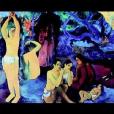《What Is Art For?》是University of Washington Press出版的圖書,作者是Ellen Dissanayake
基本介紹
- ISBN:9780295970172
- 作者:Ellen Dissanayake
- 出版社:University of Washington Press
- 出版時間:1990年8月
- 頁數:266
- 定價:USD 22.50
- 裝幀:Paperback
內容簡介
Every human society displays some form of behavior that can be called “art,” and in most societies other than our own the arts play an integral part in social life. Those who wish to understand art in its broadest sense, as a universal human endowment, need to go beyond modern Western elitist notions that disregard other cultures and ignore the human species’ four-million-year ...(展開全部) Every human society displays some form of behavior that can be called “art,” and in most societies other than our own the arts play an integral part in social life. Those who wish to understand art in its broadest sense, as a universal human endowment, need to go beyond modern Western elitist notions that disregard other cultures and ignore the human species’ four-million-year evolutionary history. This book offers a new and unprecedentedly comprehensive theory of the evolutionary significance of art. Art, meaning not only visual art, but music, poetic language, dance, and performance, is for the first time regarded from a biobehavioral or ethical viewpoint. It is shown to be a biological necessity in human existence and fundamental characteristic of the human species. In this provocative study, Ellen Dissanayake examines art along with play and ritual as human behaviors that “make special,” and proposes that making special is an inherited tendency as intrinsic to the human species as speech and toolmaking. She claims that the arts evolved as means of making socially important activities memorable and pleasurable, and thus have been essential to human survival. Avoiding simplism and reductionism, this original synthetic approach permits a fresh look at old questions about the origins, nature, purpose, and value of art. It crosses disciplinary boundaries and integrates a number of divers fields: human ethology; evolutionary biology; the psychology and philosophy of art; physical and cultural anthropology; “primitive” and prehistoric art; Western cultural hi

